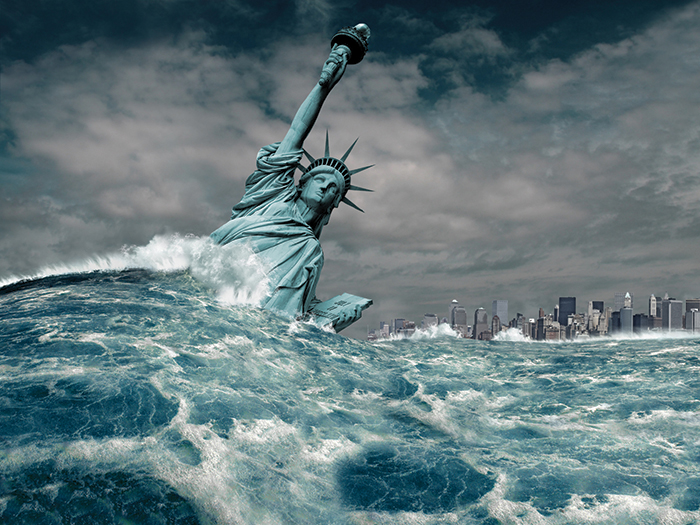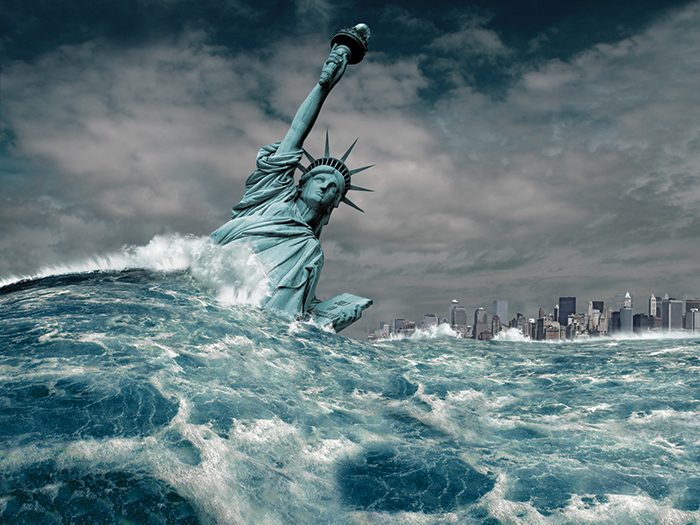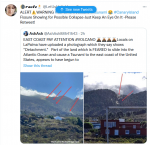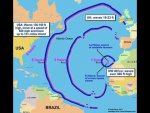You are using an out of date browser. It may not display this or other websites correctly.
You should upgrade or use an alternative browser.
You should upgrade or use an alternative browser.
Volcano Update 2 - Additional vents opening -Volcano on La Palma island in the Canary Islands has erupted
- Thread starter Warm Wisconsin
- Start date
Hognutz
Has No Life - Lives on TB
Its in earth changes, its got a lot of useful info!Where IS the original thread? Why was it moved?
Doomer Doug
TB Fanatic
My guy, Diamond called it correctly, since the actual eruption wasn't far enough north to trigger "THE" rock slide.
On the map the eruption would need to be about one inch north of all the dots. Another hysterical miss for Hal Turner who does like this all the time.
like this all the time.
Unless we start to see earthquakes migrating north, and getting bigger than 3 or so, then it is over. Not ruling that out and I will keep listening to diamond WHO IS A SCIENTIST.
On the map the eruption would need to be about one inch north of all the dots. Another hysterical miss for Hal Turner who does
Unless we start to see earthquakes migrating north, and getting bigger than 3 or so, then it is over. Not ruling that out and I will keep listening to diamond WHO IS A SCIENTIST.
TheSearcher
Are you sure about that?
That's not very big. Maybe someone on the island ripped ass?
If they didn't, they surely are now.
Optimus Prime
Senior Member
Is the EAS system working for TB2K? This seems apropos
Thanks Melodi. You're a peach!I am watching this one put up by Red Baron (Spanish only but great visuals)
View: https://www.youtube.com/watch?v=PVeQJiVPLTU
1911user
Veteran Member
It worked well on the last test. IF a tsunami warning is issued, that would certainly be worthy of EAS activation.Is the EAS system working for TB2K? This seems apropos
Lone_Hawk
Resident Spook
Who is diamond, what map?My guy, Diamond called it correctly, since the actual eruption wasn't far enough north to trigger "THE" rock slide.
On the map the eruption would need to be about one inch north of all the dots. Another hysterical miss for Hal Turner who doeslike this all the time.
Unless we start to see earthquakes migrating north, and getting bigger than 3 or so, then it is over. Not ruling that out and I will keep listening to diamond WHO IS A SCIENTIST.
Nothing like sharing the "wealth."Especially when that mass of water hits the East Coast and flexes the North American plate...
and that triggers the New Madrid and other eastern faults.
Meemur
Voice on the Prairie / FJB!
It worked well on the last test. IF a tsunami warning is issued, that would certainly be worthy of EAS activation.
I have already messaged everyone I know on the East Coast to keep a watchful eye on these events. I hope all of this is just doomer porn!
John Deere Girl
Veteran Member
I hope so, because I have close family in an area that would be impacted.I have already messaged everyone I know on the East Coast to keep a watchful eye on these events. I hope all of this is just doomer porn!
packyderms_wife
Neither here nor there.
I started a thread for woo, religion, and politics about this eruption here so that we can keep this thread strictly for the eruption.
 www.timebomb2000.com
www.timebomb2000.com
UNEX - The all things Woo, Religious, and Political La Palma Volcanic Eruption thread!
Just as the title states, I'll go fetch the links to the other three threads now. https://www.timebomb2000.com/xf/index.php?threads/magma-is-moving-underneath-la-palma-cumbre-vieja-canary-islands-volcano.607399/...
packyderms_wife
Neither here nor there.
My guy, Diamond called it correctly, since the actual eruption wasn't far enough north to trigger "THE" rock slide.
On the map the eruption would need to be about one inch north of all the dots. Another hysterical miss for Hal Turner who doeslike this all the time.
Unless we start to see earthquakes migrating north, and getting bigger than 3 or so, then it is over. Not ruling that out and I will keep listening to diamond WHO IS A SCIENTIST.
Could you post about Diamond in this thread I started? TIA.
UNEX - The all things Woo, Religious, and Political La Palma Volcanic Eruption thread!
Just as the title states, I'll go fetch the links to the other three threads now. https://www.timebomb2000.com/xf/index.php?threads/magma-is-moving-underneath-la-palma-cumbre-vieja-canary-islands-volcano.607399/...
EMICT
Veteran Member
Time to run some additional cable to the 'what if' generator to handle the increased load.It is.
Until it ain't.
Tristan
Has No Life - Lives on TB
There is plenty of info and videos on the potential impacts of a landslide, a cleaving of La Palma into the Sea. It's one Doom scenario which has higher possibility of happening than many others.
It's thought that at some point in the future there could be a 'calving' or massive landslide, which has happened before, in the range of 150-900 cubic kilometers.
There is probably only a 6 - 9 hour window of opportunity to evacuate, according to what I've read, after notice of landslide. If it were to happen, there would be little chance to flee the coasts unless you were among the very first; imagine Katrina x 10,000 as far as gridlock. I'm guessing that carrying your own extra fuel would be a good idea. I don't know how far inland it's projected to encroach - it's highly dependent on topography, energy of the wave(s), channelizing up valleys, etc. Too many variables.
The impacts would be felt throughout the nation and economy for a long period of time.
Will this happen today? This Decade? This Century? I don't know, and Geologists don't know; they only know that it has happened before in History, and evidence exists that it happens periodically - so very likely will happen again 'someday'.
If evidence that the fissure at the top ridge of the mountain is extending/getting larger or wider is reported, I'd be thinking of executing my 'plan'.
I hope this is not that day.
Best to everyone.
It's thought that at some point in the future there could be a 'calving' or massive landslide, which has happened before, in the range of 150-900 cubic kilometers.
There is probably only a 6 - 9 hour window of opportunity to evacuate, according to what I've read, after notice of landslide. If it were to happen, there would be little chance to flee the coasts unless you were among the very first; imagine Katrina x 10,000 as far as gridlock. I'm guessing that carrying your own extra fuel would be a good idea. I don't know how far inland it's projected to encroach - it's highly dependent on topography, energy of the wave(s), channelizing up valleys, etc. Too many variables.
The impacts would be felt throughout the nation and economy for a long period of time.
Will this happen today? This Decade? This Century? I don't know, and Geologists don't know; they only know that it has happened before in History, and evidence exists that it happens periodically - so very likely will happen again 'someday'.
If evidence that the fissure at the top ridge of the mountain is extending/getting larger or wider is reported, I'd be thinking of executing my 'plan'.
I hope this is not that day.
Best to everyone.
Last edited:
Dayuuum!Especially when that mass of water hits the East Coast and flexes the North American plate...
and that triggers the New Madrid and other eastern faults.
Don't even think about that.
Read up on Reelfoot Lake.
Marthanoir
TB Fanatic
Stupid fact of the day, The Canary Islands are named after the large dogs that were found there not after the Canary bird, Canaria
Old Greek
Veteran Member
Someone need to speak with Rep. Hank Johnson and get his opinion. Could the wave be large enough to tilt the US continent causing California to break off along the San Andres fault?Especially when that mass of water hits the East Coast and flexes the North American plate...
and that triggers the New Madrid and other eastern faults.

Lilbitsnana
On TB every waking moment
currently live
Milk-maid
Girls with Guns Member
Ok Doomer..... I'm more worried about getting my son and kids out of Norfolk while they are having a relationship shitshow right now... Let's not make it worse...
Trying to talk sense into stepson, GF and kids to pack up important stuff in case they need to move fast.
They are in Virginia Beach -right next to Norfolk
Yeah, hopefully his Secret Service people encourage him to pick up the pretty shells 200 yards from land when the sea goes out!May it forever after be known as "The Biden Tsunami" and the Atlantic Ocean be seen as his eternal tomb!
Best
Doc
Summerthyme
Lilbitsnana
On TB every waking moment
live
Not in English
this one has sign language in upper and/or lower corner also (they move it around every so often)
ETA: Melodi noticed and I failed to mention, info scrolls across bottom too (not in English)
Not in English
this one has sign language in upper and/or lower corner also (they move it around every so often)
ETA: Melodi noticed and I failed to mention, info scrolls across bottom too (not in English)
Last edited:
WildDaisy
God has a plan, Trust it!
155 arty
Veteran Member
You and all of your friends...
Here's a site discussing the potential fallout from a LaPalma generated Tsunami:

A Mega-Tsunami Is Coming; Can the East Coast Even Prepare?
La Palma is a beautiful island with a deadly secret: the potential to set a mega-tsunami into motion. Could the east coast even stand a chance?riskandinsurance.com
Black Swan: Mega-Tsunami
A Mega-Tsunami Is Coming; Can the East Coast Even Prepare?
Could a tsunami destroy everything from Boston to Miami? If it did, would we even stand a chance?
By: Autumn Demberger | July 30, 2018
Topics: August 2018 Issue | Business Interruption | Catastrophe | Claims | Climate Change | Crisis Management | Critical Risks | Global Risk | Property | Supply Chain | Uninsurable Risks

Scenario: La Palma earned the nickname “the beautiful island” — white sand beaches highlighted by black volcanic soil. An endless night sky filled with stars as far as the eye can see.
But beauty here is only skin deep.
Advertisement
Nestled on the western side of La Palma sits the Cumbre Vieja volcano, like a pot of water waiting to boil over. Its last big eruption was more than 50 years ago, but everyone knows it’s only a matter of time before it unleashes the beast inside.
It starts with tremors. Glasses rattle on kitchen tables while picture frames skew left and right. Tourists to La Palma brush it off, calling the jelly feeling “sea legs” — they are, after all, on an island.
But the locals know better and they hold their breath. When it does happen, the ash and lava spill out of the volcano’s mouth like a giant sigh. No one could have predicted what happens next.
The western side of the volcano cracks and splits; the steam builds up inside and pushes against the volcano’s walls. The pressure is too much; the entire western flank breaks off, the Atlantic Ocean eagerly swallowing every rock, stone and pebble as they freefall into its deep blue depths. The earth rumbles and the water begins to slosh around as its calm ebb and flow turns into frenzied splashing and crashing.
The waves grow. And they grow and they grow. To the naked eye, it looks like the heavens unleashed a curtain made of water — somehow the volcano’s landslide has produced a tsunami that reaches the sky.
And this mega-tsunami moves fast.
All 3,000 feet of water roars as it barrels away from La Palma’s coast toward the United States. As the most western island of the Canary Islands, La Pa
If a worst - case scenario develops, a mega-tsunami, there likely won't be any east coast ports remaining.
lma sits eight to 10 hours away from the eastern shore by plane. It’s the one piece of good news: Residents have a window of time to evacuate.
But chaos breeds chaos, and soon the highways are clogged with cars, frightened families from Boston to Miami trying to flee inland. A final silver lining: The wave decreases as it sojourns across the Atlantic from a staggering 3,000 to a mere 160 feet.
The wave touches down, flowing onto beaches and flooding bays. Coastal buildings don’t stand a chance; water rushes inland 10 miles along the entire eastern seaboard. Homes are destroyed, countless hotels crumble under the force. Chemical plants that once churned out product by the oceanside spill their toxic waste into the sea.
Beaches up and down the coast account for billions of dollars in tourism revenue each summer. It looks like vacationers might not be able to return for decades thanks to the amount of oils and solvents released.
On top of that, the East Coast is home to 29 percent of the U.S. population. Now they are displaced — their homes destroyed, their cities flooded. Not everyone made it out in time.
It’s not the end of the world, but i
If a worst - case scenario develops, a mega-tsunami, there likely won't be any east coast ports remaining.
t very much feels like it.
Analysis: La Palma’s mega-tsunami is a disaster, no doubt. And — scarily enough — it’s not impossible.
In 1949, the Cumbre Vieja volcano erupted along the coast of La Palma and caused an earthquake that created a mile-long fissure on its east side.
The force of the fissure then caused the volcano’s west side to slip six feet into the Atlantic Ocean. It has since remained in this position, its estimated 1.5 trillion metric tons waiting like a ticking time bomb.
Researcher and scientist Steven Ward, now a research geophysicist at the Institute of Geophysics and Planetary Physics, UC Santa Cruz, and Simon Day, a senior research associate at the Institute for Risk & Disaster Reduction, University College London, first quantified the features of the La Palma mega-tsunami.
They looked at the geological structure of the volcano and created simulations of the event, which can be seen on Ward’s YouTube channel.
If circumstances align and the volcano erupts powerfully enough, the western half of the volcano could fall into the ocean and create this mega-tsunami scenario in full, the research concluded.
“La Palma is a volcanic island,” said Ward. “It’s built up from ash and lava that pushed out layers like a stack of shingles on a sloping roof. Sometimes, volcano sides become unstable and like that stack of shingles, part of the pile slides off. It’s a common thing [to have] huge pieces of debris fall off.”
“The unusual structural evolution of the volcano, revealed by changes in the distribution of eruption sites over its surface since about 10,000 years ago, could best be explained by the progressive development of a landslide surface under that western flank and consequent weakening,” added Day.
“Satellite radar data has shown that a large section of the west flank is continuing to move very slowly … despite the fact that it is not being pushed by magma rising to the surface within the volcano,” he said.
“La Palma has a lot of water in it,” Ward explained. “The thinking is that in some future eruption, hot magma will reach this water, turn it into steam and the steam will split the mountain.”
A landslide of this scale could send out a mega-tsunami-sized wave. Ward said the hard part is predicting if, or when, the landmass will actually slide into the Atlantic.
Such an event won’t likely come out of the blue, he said. There will be a buildup of volcanic and tectonic activity beforehand that will aid researchers in forecasting a potential disaster.
In fact, earlier this year, residents of the island feared the worst as La Palma encountered more than 40 mini-earthquakes within a 48-hour period. Large tremors stemming from Cumbre Vieja followed soon after, though the volcano never erupted.
A Catastrophe Too Big to Predict
A mega-tsunami is hard to predict and prepare for. On a smaller scale, tsunamis themselves are rare enough events.
“Usually you have significant property and clean-up — and BI damage or costs,” said Ed Mazman, president of property, Ironshore.
Specifically, Mazman said, coastal businesses are most at risk: “A lot of that is hospitality, hotels, resorts. This is a tremendous event, uncontrollable exposures.”
There are ways to prepare for a “typical” tsunami, but when it comes to an event like this and the size of the potential wave, “I don’t think we could really protect against it,” he said.
“Firms are thinking about life safety over property damage. You can’t really protect property. If it’s in the path, if it’s close enough — it’s like a tornado. You could have a structure prepped for a tornado, but if it’s in the way of a CAT 5, that tornado’s going to win,” Mazman said.
The best example to look at in terms of damage done is Superstorm Sandy, which hit the East Coast in October 2012.
While Sandy gives an idea of the extent of damage to expect, a mega-tsunami still differs in one glaring way: the area impacted. This is not just one city bearing the brunt of the damage; anything in between Boston and Miami could feel the wrath of the tsunami.
“Every scenario [already modeled] seems to be limited to one geographic area, like a large metropolitan area. If a CAT 5 hurricane were to hit Miami, it’s $150 to $200 billion. This [mega-tsunami] would be at least 10 times that,” said Mazman.
The good news: There’s a window of time for those on the East Coast to evacuate before a mega-tsunami even touches down on land.
“A tsunami travels as fast as a jet airplane, 400 to 500 miles per hour. But the ocean’s pretty big. From La Palma to the East Coast, it would take eight to 10 hours for a mega-tsunami to get there,” Ward explained.
Ed Mazman, president of property, Ironshore
Mazman said that because of this extra time and the fact that the United States is a tech-savvy country, the coast might see a lower loss of life than anticipated from an event like this.
To put it into perspective, in late 2004, a tsunami hit Indonesia after the third-largest recorded earthquake rumbled its way through the Indian Ocean. Nearly 280,000 people were killed by waves measuring as high as 100 feet.
The residents only had 20 minutes between the earthquake and the tsunami hitting land to evacuate — not nearly enough time to even register a tsunami was on its way.
With La Palma’s mega-tsunami, however, Ward said there would be enough activity months in advance, leading up to that final landslide.
Measuring the Environmental Impact of a Mega-Tsunami
With East Coasters safely out of the way, it’s the clean-up that will take the longest.
Petroleum-based fuels and solvents will leave a lasting impact on the environment long after flood waters recede.
After Hurricane Harvey, the CAT 4 hurricane that hit Houston in 2017, several oil and chemical refineries were hit with huge penalties for environmental violations. House and shared water wells had to be cleared of growing bacteria. The air quality took a significant hit as well.
On top of pollutant issues, because of the size and scale of a mega-tsunami, many sea creatures might be displaced or run aground, disrupting deep-water ecosystems.
The scariest factor is the number of nuclear power plants concentrated on the East Coast. In 2011, a 50-foot tsunami hit Japan, disabling the power supply and cooling system for three nuclear reactors in Fukushima, causing them to melt down. Former residents are still waiting to return to the area.
With the potential for nearly 40 East Coast plants to melt down, some areas in the U.S. may never be inhabitable again.
Preparing for the Worst
Though La Palma’s mega-tsunami would be hard to predict and even harder to mitigate the risk, coastal properties can start by investing in flood and storm surge insurance, stabilizing structures with wind and water resilient materials, or adding in water sensors.
Clients would have insurance and be prepared for flood, Mazman said, “but this would have a huge financial impact beyond the insurance industry. It would be interesting to see the view from CAT modeling firms on an event of this magnitude.
“I can’t imagine a loss of that scale. It would be a world-wide disaster. Insurance would not be able to cover enough.”
However, Mazman said: “The one way to prepare would be to add in a warning system. The Pacific and Indian Oceans have one. Does the Atlantic?” &
Autumn Demberger is the content strategist at Risk & Insurance®. She can be reached at demberger@theinstitutes.org.
edit: cleaned up unnecessary graphics & etc.

Ed Mazman, president of property, Ironshore
Mazman said that because of this extra time and the fact that the United States is a tech-savvy country, the coast might see a lower loss of life than anticipated from an event like this.
Mr Mazman is a moron... there is no technology on earth that will let you completely evacuate Manhattan or Florida in 10 hours! The quality of "experts" these days is really worrisome.
Summerthyme
Doomer Doug
TB Fanatic
I will need to get back to my apartment and use my laptop. I am doing mywalk and on my cell phone.
Melodi
Disaster Cat
The second station also has headlines running under the screen, much easier to understand and a good thing for the many people who learned how to read Spanish in school even if they can't speak it very well (I'm usually the opposite but not with that accent - although this station is much easier to understand).






